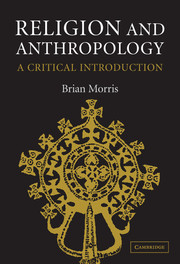Book contents
- Frontmatter
- Contents
- Preface
- Introduction
- 1 Shamanism
- 2 Buddhism and Spirit-Cults
- 3 Islam and Popular Religion
- 4 Hinduism and New Religious Movements
- 5 Christianity and Religion in Africa
- 6 African-American Religions
- 7 Religions in Melanesia
- 8 Neopaganism and the New Age Movement
- Conclusions
- References
- Index
8 - Neopaganism and the New Age Movement
Published online by Cambridge University Press: 29 March 2011
- Frontmatter
- Contents
- Preface
- Introduction
- 1 Shamanism
- 2 Buddhism and Spirit-Cults
- 3 Islam and Popular Religion
- 4 Hinduism and New Religious Movements
- 5 Christianity and Religion in Africa
- 6 African-American Religions
- 7 Religions in Melanesia
- 8 Neopaganism and the New Age Movement
- Conclusions
- References
- Index
Summary
PROLOGUE
Over the past fifty years in Western Europe and North America, there has been a tremendous upsurge of what has generally been described as ‘new religious movements’. Although mainly associated with western societies and with the ‘counterculture’ of the 1960s, these movements have not been confined to the western world, and their social significance and impact have been both profound and worldwide. Among the best known of these religious movements are the Church of Scientology, the Divine Light Mission, the Unification Church, the Order of the Solar Temple, the Children of God, Subud, the People's Temple, and a movement that we have discussed in Chapter 4 – the Hare Krishna movement. Most of these religious movements started as social organizations that were largely community based, and, as Elizabeth Arweck writes, they ‘drew clear boundaries between themselves and the wider society, developed hierarchical structures, and had a distinct set of beliefs and teachings formulated by the leadership and put down in writing’ (2002, 265).
These teachings were often syncretic in nature, drawing from various religious traditions. “New” religions are not, of course, entirely a new phenomena, as innovative religious developments have occurred throughout history, but contemporary religious movements have tended to be distinctive in being highly syncretic and in utilizing modern means of communication, including the Internet. Membership of many of these movements has also tended to be rather restrictive – mainly young, well educated, and of a largely middle-class or even affluent background.
- Type
- Chapter
- Information
- Religion and AnthropologyA Critical Introduction, pp. 271 - 309Publisher: Cambridge University PressPrint publication year: 2005



